Islam
ISLAM TIMELINE
Distant Past: According to Islamic tradition, Adam was not only the first man, but also the first prophet. Subsequent prophets included Noah, Abraham, Moses, and Jesus.
570: The Prophet Muhammad was born.
610: The beginning of the revelation of the Quran took place.
622: The Hijra (emigration) to Medina took place.
629: Mecca was conquered.
632: The Prophet Muhammad died.
632: The accession of Abu Bakr as first Caliph took place.
634: The first battle between Muslim and Byzantine forces took place.
651: The Sassanid empire was defeated.
657: The battle of Siffin took place.
661: The Umayyad Caliphate was established.
680: The battle of Karbala took place.
900s: Greek philosophy was read in Baghdad.
1200s: The Muslim conquest of Turkey started.
1300s: The Muslim conquest of India started.
1400: A sultanate in Malacca, Malaysia was established.
1514-1639: There was a struggle between the Sunni Ottoman Empire and Shi’i Safavid Empire.
1630: The first known Muslim immigrant arrived in America.
1920: Most of the Muslim world was under European colonial control.
1950s-1960s: There was a decolonization of Muslim world.
1980-1988: The Iran-Iraq War took place.
FOUNDER/GROUP HISTORY
Islam was established by Muhammad ibn Abdullah (570-632), born in the city of Mecca on the Western side of the Arabian Peninsula. According to Muslim belief, Muhammad was brought up in the pagan and polytheistic religion of the Meccans, but held back from their more problematic practices of drinking, gambling, and fornicating. He worked as a trader, loved his wife Khadija bint Khuwaylid (555-619), and often withdrew to mediate in a cave in a mountain a little outside Mecca. Here, in 610, he received a revelation from God, delivered through the angel Gabriel. This first revelation was followed by other revelations over the remainder of Muhammad’s life.
Starting with his wife Khadija, Muhammad told people about his revelations, and gathered a small group of followers who accepted that there was only one god, called Allah, and rejected the various gods of the polytheist Meccans. Muhammad’s early followers also accepted that Muhammad was a prophet (rasul, messenger), receiving revelations from God, and that they should focus on God, the Day of Judgment and the afterlife, not only on the apparent but temporary delights of life on earth. Muhammad’s revelations referred to the stories familiar to Jews and Christians from the Torah and the Bible, which were evidently already known in Mecca, as there were Jews in the region, as well as a small number of Christians. Some of the persons in these stories are associated by Muslims with Mecca. Abraham is believed to have left his wife Hagar and his son Ishmael there. Running short of water, Hagar ran in desperation between two hills, Safa and Marwa, until God brought forth a spring of fresh water for them. It was 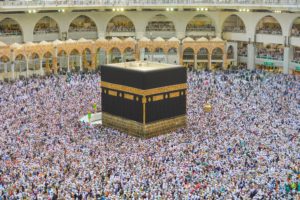 partly in gratitude for this and partly in response to God’s command that Abraham later built a temple nearby, the small cubed edifice known as the Ka’ba [Image at right].
partly in gratitude for this and partly in response to God’s command that Abraham later built a temple nearby, the small cubed edifice known as the Ka’ba [Image at right].
Although Muhammad gathered some followers, he attracted rather more opposition, as he was challenging not only the way of life of the Meccans but also their gods. He was protected by the leader of his clan, his uncle Abu Talib ibn ‘Abd al-Muttalib (d. c. 619), however, and continued his preaching. After Abu Talib’s death, the new clan chief was hostile to Muhammad, who in 622 led some seventy followers from Mecca for Yathrib, an originally Jewish oasis some 300 miles to the north where there were already a few Muslims. The Muslims were accepted in Yathrib as a new clan and as members of Yathrib’s tribal confederacy. The move to Yathrib, known as the hijra (emigration), was the start of a distinct self-governing Muslim community, and later became year zero in the Islamic calendar. Yathrib became known as Medina, “the city.”
The hijra started a new phase in the history of Islam, as Muhammad became not just a preacher but also the leader of his community, and Islam thus came to cover community life as well as the more general principles that Muhammad had preached in Mecca. The Muslim community of Medina under the Prophet was soon involved in war, however, fighting the Meccans in a series of minor engagements and a few major battles. This war lasted until 629, when Mecca surrendered to a force of some ten thousand Muslims led by Muhammad. At this point, Islam was established as the dominant religious and political 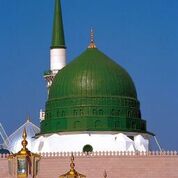 force in the area; Muhammad, however, died soon afterwards, in 632. He was buried in Medina, where a mosque was later built over his tomb [Image at right]. He was replaced as leader of the Muslims by his father-in-law, Abu Bakr Abdallah ibn Abi Quhafa (573-634), who became the first “Caliph” (successor).
force in the area; Muhammad, however, died soon afterwards, in 632. He was buried in Medina, where a mosque was later built over his tomb [Image at right]. He was replaced as leader of the Muslims by his father-in-law, Abu Bakr Abdallah ibn Abi Quhafa (573-634), who became the first “Caliph” (successor).
Islam then spread beyond the Arabian peninsula in the wake of a series of wars, between 634 and 651, during which the Muslims defeated both the two major regional empires of the time, the Eastern Roman or Byzantine empire based in Constantinople (now Istanbul) and the Sassanid empire based in present-day Iran (Hoyland 2014). The Muslim armies took half the territories of the Eastern Roman empire (most importantly Egypt and the Levant area around Syria) and all the territories of the Sassanid empire (most importantly present-day Iraq, Iran, and parts of Afghanistan). They later added what is now Morocco in the west and what is now Pakistan in the south east. These conquests are remarkable, but not unprecedented: the Western Roman empire based on Rome, for example, was also overrun by “barbarians,” in this case Goths and Vandals. Centuries later, half the territories conquered by the Muslim Arabs would themselves be conquered by a new wave of barbarians, the Mongols. What is remarkable is that the Muslim Arabs maintained the territories they had conquered as one empire for several centuries, rather than letting their empire fragment as the empires of the Goths, Vandals and Mongols quickly fragmented.
Although the Muslim Arab empire or Caliphate did not begin to fragment politically for several centuries, an early dispute did develop between several candidates for the position of Caliph (successor, ruler), with important consequences for the future of Islam. Shortly after Ali ibn Abi Talib (601-61), the husband of Muhammad’s daughter Fatima (d. 632), became Caliph in 656, Muʿawiya ibn Abi Sufyan (602-80), a distant relative of Muhammad, led an army against Ali at the Battle of Siffin (657). Although this battle proved indecisive, Muʿawiya became Caliph after the death of Ali, establishing a family dynasty that was opposed unsuccessfully by the family of Ali, most notable at the Battle of Karbala (680), during which Ali’s son Hussein was killed. The chief significance of these events was that the normative Islam of the Caliphate, known as Sunni Islam, developed distinctly from the Islam followed by the supporters of Ali, who became known as the Shi’a, giving rise to the two major denominations of Islam. Sunni Islam and Shi’i Islam have separate WRSP entries. What is said of Islam in the remainder of this entry refers only to what is true of both Sunni Islam and Shi’i Islam.
The Caliphate formed the heart of what is now the Middle East, governed after 661 first by the Umayyad dynasty from Damascus and later by the Abbasid dynasty from Baghdad. It became one of the major political-cultural blocs in human history, comparable to the original Roman empire or Han China, and firmly established Islam as a major world religion. Its rulers were Arabic-speaking Muslims, and over the centuries the majority of its inhabitants adopted the language and religion of the elite, though somewhat unevenly. Earlier languages, notably Persian and Tamazight (Berber), survived in the far east and far west of the Caliphate, and earlier religions, notably Christianity and Judaism, survived in pockets everywhere. Christians and Jews inside the Caliphate were legally protected, but were also subject to certain legal restrictions.
Islam later spread beyond the Caliphate, sometimes in the wake of further conquests by Muslim rulers (most importantly, of what is now Turkey in the eleventh and twelfth centuries and of most of India between the twelfth and fourteenth centuries) and sometimes through preaching. Preachers took Islam south into sub-Saharan Africa, north into Central Asia, east into China, and southeast into Indonesia and 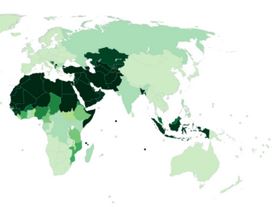 Malaysia, where a Muslim sultanate was established in about 1400. The “Muslim world,” countries in which Muslims form the majority [image at right], now stretches south-west from Kazakhstan through Turkey and the Arab world to Senegal in West Africa, and south-east from Kazakhstan through Iran and Pakistan to Indonesia. Muslims also form substantial minorities in China and Russia, and there are significant Muslim minorities in Western Europe and North America, where the first Muslim arrived in 1630 (GhaneaBassiri 2010:9). Islam is now the world’s second largest religion, estimated by the Pew Research Center (Lipka 2017) as being followed by 1,800,000,000 people in 2015, about one quarter of the earth’s population. The largest ethnic groups are, in order of size, Arab, South Asian, Indonesian, and African. Although Islam is associated with the Arabs, and although Arabic is the language of the Quran and remains the universal language of Islamic scholarship, most Muslims today are not Arabs.
Malaysia, where a Muslim sultanate was established in about 1400. The “Muslim world,” countries in which Muslims form the majority [image at right], now stretches south-west from Kazakhstan through Turkey and the Arab world to Senegal in West Africa, and south-east from Kazakhstan through Iran and Pakistan to Indonesia. Muslims also form substantial minorities in China and Russia, and there are significant Muslim minorities in Western Europe and North America, where the first Muslim arrived in 1630 (GhaneaBassiri 2010:9). Islam is now the world’s second largest religion, estimated by the Pew Research Center (Lipka 2017) as being followed by 1,800,000,000 people in 2015, about one quarter of the earth’s population. The largest ethnic groups are, in order of size, Arab, South Asian, Indonesian, and African. Although Islam is associated with the Arabs, and although Arabic is the language of the Quran and remains the universal language of Islamic scholarship, most Muslims today are not Arabs.
DOCTRINES/BELIEFS
Muslims believe that there is one single god, called Allah, who created the world and humanity, sent a series of prophets to tell people how to live their lives, and will judge all humans individually on the Day of Judgment, sending some to heaven and others to hell. They believe that the first prophet was Adam, that later prophets included Noah, Abraham, Moses, and Jesus, and that Muhammad was the last prophet, after whom there will be no more prophets. All prophets taught essentially the same message, but the teachings of some prophets were later misunderstood or distorted by their followers, giving rise, for example, to the idea that Jesus was the son of God. Just as God taught through Moses how the Jews should live, bringing them the commandments (mitzvot) that are the basis of the law (halakha), so God also taught through Muhammad how the Muslims should live, 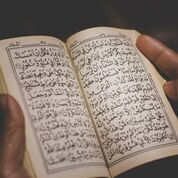 bringing them the rules (fiqh) that are the basis of the law (sharia). Muslims also believe that the text of the Quran [Image at right] is the word of God, revealed to the Prophet Muhammad through the intermediary of the angel Gabriel. As well as believing in the existence of angels, beings created by God just like humans, Muslims also believe in the existence of the jinn, a third class of being, comparable in some ways to demons. The jinn, like humans, have free will, and so can choose to obey God or disobey God. There are thus Muslim jinn and Christian jinn, just as there are Muslim and Christian humans. Angels, in contrast, do not have free will: they can only obey God. For this reason, it is argued, Satan cannot ever have been an angel.
bringing them the rules (fiqh) that are the basis of the law (sharia). Muslims also believe that the text of the Quran [Image at right] is the word of God, revealed to the Prophet Muhammad through the intermediary of the angel Gabriel. As well as believing in the existence of angels, beings created by God just like humans, Muslims also believe in the existence of the jinn, a third class of being, comparable in some ways to demons. The jinn, like humans, have free will, and so can choose to obey God or disobey God. There are thus Muslim jinn and Christian jinn, just as there are Muslim and Christian humans. Angels, in contrast, do not have free will: they can only obey God. For this reason, it is argued, Satan cannot ever have been an angel.
Islamic doctrines and beliefs, then, belong to the same group as Jewish and Christian doctrines and beliefs. God is understood in a very similar way, though Muslims are closer to Jews than to Christians in rejecting the idea of a trinity and in having a divine law (sharia or halakha). The community of believers is also understood in a very similar way, though Muslims are closer to Christians than to Jews in that they encourage conversion. Muslims, however, also believe that Christians and Jews living in a Muslim state have the right to follow their own religions if they choose not to convert and are loyal to the state: forced conversion is not acceptable.
Partly as a result of these similarities, Islamic theology has had to grapple with many of the same problems that have confronted Jewish and Christian theology. Among these are the issues of free will and predestination. A further connection between Islamic, Jewish and Christian theology results from the influence of Greek philosophy, which became known to Muslim theologians during the ninth century, and gave rise to much the same debates as it did in Jewish and Christian circles. It has been argued that medieval Latin scholastic philosophy and the Arabic philosophy of the same period, which engaged Jews in the Arab world as well as Muslims, are essentially one (Marenbon 1998:1-2).
Islamic theology has also had to grapple with the implications of the ideas of the Enlightenment and the discoveries of natural science. During the nineteenth century, a small number of Muslim intellectuals who were in close contact with intellectual developments in Europe followed nineteenth-century European models. Some became anti-clericals or even atheists on the French model, while others developed liberal, modernist understandings of Islam which emphasized the compatibility of Islam, reason and science (Hourani 1962). This trend (Islamic modernism) never became widespread in the Muslim world outside a narrow class, partly because the political situation meant that its exponents were open to charges of collaboration with colonialism, but remains alive today. A few liberal Muslim theologians now argue, for example, in favor of critical readings of the Quran and later Islamic texts, and in favor of understandings of Islam that are compatible with feminism and LGBT rights (Safi 2003). Mainstream positions on some issues, however, have shifted significantly over the last 150 years. Slavery, which was once a universal institution recognized and regulated by the Sharia, is now almost entirely rejected (Clarence-Smith 2006). Understandings of gender have also changed almost everywhere, though gender practices remain extremely conservative by liberal Western standards (Haddad and Esposito 1998).
Most Muslims, in contrast, have rejected the more controversial discoveries of natural science. Evolution is not generally taught in schools in the Muslim world, and Muslims are generally creationists, though the term is not used (Riexinger 2011). The Quran is still generally understood as the actual words of God.
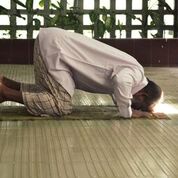
RITUALS/PRACTICES
The central personal ritual of Islam is the five daily prayers or sala [Image at right], which are to be performed at particular times every day. Any adult, sane Muslim who is not ill or menstruating must put themselves in a state of purity by washing in a prescribed fashion, turn towards the Ka’ba in Mecca, and recite particular words accompanied by particular motions, including sajda, during which the forehead is placed on the ground. Performing the sala takes about five or ten minutes, except on Fridays, when men (and sometimes women) perform the sala jointly in a mosque after listening to a sermon. Sermons vary in length, but the Friday Prayer generally lasts for about one hour. The sala is understood as an obligation that brings various benefits.
In addition to the sala there is also the du’a, shorter prayers for particular purposes that may be said as desired at appropriate moments. A du’a might ask God for faith, or for deliverance from a particular peril, and does not require any particular posture.
The central communal practice of Islam is fasting during the day for the whole of the month of Ramadan. Fasting involves abstaining not only from eating food but also from drinking (and by extension smoking) and from sexual activity. Like the sala, fasting is understood as an obligation that brings various benefits. Some Muslims also fast at additional points during the year.
A third important practice which is both individual and communal is the giving of charity. This is obligatory for those who have the financial means to do it, and is calculated following particular rules and rates, rather like an annual income tax return. It is an individual practice in that it is the individual who pays it, and communal in that it is the community that benefits from it.
The extent to which Muslims actually perform the sala varies from time to time and place to place. Although in theory there is no excuse for not performing it (other than being a child, insane, etc.), many people in the largest cities of the Muslim world today do not perform the sala, and perhaps even most do not perform it. Some Muslims perform the sala scrupulously during some periods of their lives but not during others. Most Muslims in the Muslim world, in contrast, do fast during Ramadan. The rhythm of life adjusts, with the working day ending early so that families can eat together at sunset, and eating in public during the fast is frowned upon. The extent to which charity is given is hard to ascertain, but many wealthy Muslims clearly do give charity as they should (Sedgwick 2006).
In addition to prayer and fasting, an important ritual for those in a position to perform it is visiting the Ka’ba. At the beginning of Islam, this was possible for all Muslims, as all Muslims lived in the Arabian Peninsula. As Islam spread around the world, it became possible only for the small number of Muslims who lived near Mecca or for those who had the time and money needed to travel long distances; these were often members of the ulama (scholars of religion). With the introduction of steamships and then airplanes, it became possible for ever more Muslims to travel to Mecca, and numbers visiting the Ka’ba rose from the thousands to the millions, necessitating a major re-building process (Peters 1994a).
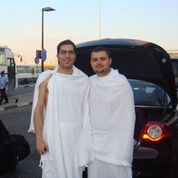
Visiting the Ka’ba requires not only a state of purity but also (for males) a particular form of dress, consisting of two pieces of undyed and unsewn cloth [Image at right]. The visitor then circles the Ka’ba seven times in an anti-clockwise direction, performs some sala, and runs (like Hagar) between the nearby hills of Safa and Marwa. This ritual is known as umra, and can be performed at any point during the year. During one particular month of the year, called the month of the Hajj, visitors perform not only rituals that make up the umra but also a further series of rituals, performed over several days at various places within about fifteen miles of the Ka’ba. The hajj culminates in the sacrifice of a small animal such as a sheep, a sacrifice that is observed by Muslims throughout the world, known as Eid al-adha, “the festival of sacrifice.” The Eid al-adha is one of two major annual festivals, the other marking the end of Ramadan.
Beyond these major rituals, there are also many other less complex rituals, including recitation of the Quran and visiting the tomb of the Prophet in Medina. There are also practices of abstention: Muslims should not eat pork or consume psychoactive drugs. Almost all Muslims agree that alcohol is prohibited; the status of other substances that were not known at the time of the Prophet, such as caffeine, nicotine, and cannabis, is disputed. Unmarried persons of different sexes should avoid contact with each other, and women should dress modestly, as should men, though requirements for male dress are less onerous.
In addition, Muslims also observe the Sharia in other areas. The Sharia determines the details of rituals and religious practices such as those already discussed, but also covers numerous other areas, including family law, criminal law, and commercial law (Hallaq 2004). In family law, the Sharia covers marriage, the rights and duties of spouses, divorce, and inheritance. In criminal law, it covers offenses (for example, theft) and sometimes also punishment. In commercial law, it covers both permitted transactions (how to make a contract) and prohibited transactions (certain types of contracts, notably those involving interest). Following the Sharia is a religious obligation: it is wrong to neglect one’s spouse, steal, or cheat one’s business partner. But the Sharia is also used to resolve disputes and practical problems: how much time must pass before a vanished spouse may be assumed to have died? Is it theft if one takes someone else’s bag by mistake? What happens if a horse that has been sold dies before its new owner can take possession of it?
There is general agreement in principle on the importance of following the Sharia, but there is not always agreement on precisely what the Sharia says on any particular issue. The big points are normally clear, that a Muslim should give in charity, for example. Many details, however, are not clear, and have been discussed and disputed among the ulama for centuries. Although ordinary Muslims do not normally join in these discussions, which can become very technical, not everyone always agrees with the conclusions reached by the ulama, and different individuals often have somewhat different understandings of what the Sharia says on a particular topic.
The Sharia is not the only law followed by Muslims. Muslims also follow regulations made by states and institutions, and sometimes also local or tribal custom, covering anything from prices and wages to maintaining roads and training apprentices. Since the early nineteenth century, the balance between Sharia and statute law has shifted dramatically, to the extent that in most Muslim countries statute law has entirely replaced Sharia for all purposes save family law, where statute law often still reflects Sharia norms. Some countries also follow Sharia norms in other areas of the law, and only a very few countries maintain a purely Sharia system. For most Muslims, then, Sharia is now a matter of individual conscience.
In addition to the rituals and practices followed by all Muslims, additional ascetic and meditative practices are followed by Sufis. Sufis have their own WRSP entry.
ORGANIZATION/LEADERSHIP
All Muslims agree that the original leader of the Muslim community was the Prophet Muhammad. Views differ, however, as to the proper leadership after the death of the Prophet in 632, and different denominations have come into being around these different views. Differences in understanding of the Sharia and of theology have then became associated with these different denominations. Denominations within Islam differ as much as the Christian churches do.
The most important division is between Sunni and Shi’i Muslims, a division comparable to that between Catholic and Orthodox Christians. Sunni Muslims, who are the majority, identify with the sunna, the practices taught by the Prophet. Shi’i Muslims, who are the minority globally but are the majority in certain areas, also identify with the sunna but further identify with Ali ibn Abi Talib, the husband of Muhammad’s daughter Fatima, and his shi’a (followers), from whom their name derives. In addition, there are a number of groups that are neither Sunni nor Shi’i, but originate within Islam. Ancient groups include the Ibadis, the Druze and the Alevis, while groups of more recent origin include the Ahmadiyya, the Baha’i Faith, the Moorish Science Temple of America, and the Nation of Islam. The extent to which these now regard themselves as Islamic varies. Some may be described as denominations of Islam, while some have become distinct religions.
These different denominations of Islam have no common leadership other than the Organization of Islamic Cooperation, an inter- 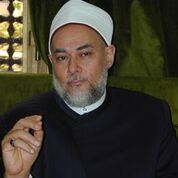 governmental body founded in 1969 that has had little political impact and even less religious impact. Sunni and Shi’i Islam, however, have in common the institution of the ulama. The ulama [image at right] are full-time religious specialists who, for more than a millennium, dominated preaching, education, and the judiciary, forming a powerful and important class. The construction of modern states has taken away many of these functions, and secular intellectuals have recently been important in the development of Islamic belief, but the ulama still remain the collective leadership and the central institution of both Sunni and Shi’i Islam. In some ways they resemble priests, but they are not priests, as there are no ritual practices that are reserved for them. All Muslims are equally capable of carrying out all ritual functions. A trained preacher is preferable to an untrained preacher, but in principle any Muslim can preach a sermon and lead the prayer.
governmental body founded in 1969 that has had little political impact and even less religious impact. Sunni and Shi’i Islam, however, have in common the institution of the ulama. The ulama [image at right] are full-time religious specialists who, for more than a millennium, dominated preaching, education, and the judiciary, forming a powerful and important class. The construction of modern states has taken away many of these functions, and secular intellectuals have recently been important in the development of Islamic belief, but the ulama still remain the collective leadership and the central institution of both Sunni and Shi’i Islam. In some ways they resemble priests, but they are not priests, as there are no ritual practices that are reserved for them. All Muslims are equally capable of carrying out all ritual functions. A trained preacher is preferable to an untrained preacher, but in principle any Muslim can preach a sermon and lead the prayer.
ISSUES/CHALLENGES
Islam is still dealing with some of the implications of the ideas of the Enlightenment and the discoveries of natural science, discussed above. There are also social issues, though these are less disputed among Muslims than among Christians in the West. There are, however, disagreements over certain gender practices. Some Muslim countries, for example, have made it easier for a wife to initiate divorce proceedings against her husband, a reform that is not universally welcomed.
Differences between Muslim and international (non-Muslim) norms are also sometimes an issue. Islam, for example, forbids interest, which is central to the global financial system. To some extent, this conflict has been resolved by the creation of the Islamic finance industry, consisting of Islamic banks and Islamic divisions of the major international banks that structure standard financial transactions in ways that comply with the Sharia. Islamic forms of standard international industries have also been developed in other areas: there is an Islamic food industry, Islamic tourism, Islamic media, and so on.
In addition, there are a number of essentially political issues. One of these is the issue of sectarianism. Ever since the battle of Siffin in 657, Sunni and Shi’i Muslims have periodically confronted each other. Political conflicts between Muslims empires and states have sometimes followed sectarian lines, as for example during the fierce struggle between the Sunni Ottoman Empire and the Shi’i Safavid Empire between 1514 and 1639 or during the Iran-Iraq War of 1980-1988, which was fought over territory that had once been disputed between Ottomans and Safavids. Sunni and Shi’i states have also lived at peace with each other over long periods, however. Similarly, civil wars have sometimes been fought along sectarian lines, for example in Lebanon 1975-1990 and in Iraq after the destruction of Saddam’s (Sunni-dominated) state in 2003. Again, Sunni and Shi’i populations have also often lived peacefully together. The issue of sectarianism within Islam is an instance of the difficult relationship between religion, identity, politics, and conflict that is also found elsewhere.
A further issue confronting the Muslim world is relations with the West. For many centuries, Muslim and Christian states competed for global dominance, though some individual states also broke ranks and formed alliances across religious lines. Until the sixteenth and seventeenth centuries, the Muslim states seemed to be leading, in terms of scientific and cultural achievements as well as geopolitical power. The tide then turned, however, and by the nineteenth century it was clear 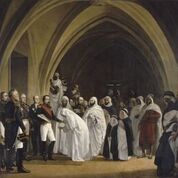 that the Christian states had overtaken the Muslim states. By 1920, most of the Muslim world was under European colonial control [image at right]. This is one reason why liberal theology remained a minority position: liberal positions seemed uncomfortably close to European positions. Since the 1950s and 1960s, decolonization has restored the political independence of the Muslim world, but many Muslims still feel that the so-called “international community” is against them. This is one cause of the anti-Western positions taken by certain Muslim states and non-state groups. There are also Muslim states and non-state groups that are pro-Western, and individual Muslims may actually be Westerners as well as pro-Western. For example, many Muslims are loyal American citizens. In general, however, relations with the West remain a major issue, extending beyond politics to questions of identity and cultural authenticity.
that the Christian states had overtaken the Muslim states. By 1920, most of the Muslim world was under European colonial control [image at right]. This is one reason why liberal theology remained a minority position: liberal positions seemed uncomfortably close to European positions. Since the 1950s and 1960s, decolonization has restored the political independence of the Muslim world, but many Muslims still feel that the so-called “international community” is against them. This is one cause of the anti-Western positions taken by certain Muslim states and non-state groups. There are also Muslim states and non-state groups that are pro-Western, and individual Muslims may actually be Westerners as well as pro-Western. For example, many Muslims are loyal American citizens. In general, however, relations with the West remain a major issue, extending beyond politics to questions of identity and cultural authenticity.
A related issue is terrorism, which has played a prominent role in recent sectarian conflict and also in recent conflict between Muslim groups and the West. As both a strategy and a tactic, terrorism originates outside Islam (in the nineteenth-century West), but the tactic of “suicide bombing” has become particularly associated with Islamic groups and with the Islamic concept of martyrdom. Opinion is divided. In general, Muslims are happier to condemn the actions and the theology of groups with which they have no political sympathy than to condemn groups with whose objectives they sympathize.
IMAGES
Image #1: The Ka’ba. Photo by Adli Wahid on Unsplash.
Image #2: Dome over the tomb of the Prophet Muhammad in Medina. Photo by Abdul Hafeez Bakhsh. CC BY-SA 3.0.
Image #3: Muslims as percent of total population by nation based on data from Pew Research Center (2012). Map by M. Tracy Hunter. CC BY-SA 3.0.
Image #4: The Quran. Hoto by Fauzan My on Pixabay.
Image #5. Man praying sala. Photo by Muhammad Abdullah Al Akib on Pexels.
Image #6. Two men in ihram. Photo by Al Jazeera English. CC BY-SA 2.0.
Image #7. A member of the ulama, Ali Gomaa, in 2004. Photo by Lucia Luna.
Image #8. Emperor Napoleon III frees the Emir Abdelkader. Painting by Jean-Baptiste-Ange Tissier, 1861.
REFERENCES
Clarence-Smith, W. G. 2006. Islam and the Abolition of Slavery. New York: Oxford University Press.
GhaneaBassiri, Kambiz. 2010. A History of Islam in America: From the New World to the New World Order. New York: Cambridge University Press.
Haddad, Yvonne Yazbeck, and John L. Esposito, eds. 1998. Islam, Gender, and Social Change. New York: Oxford University Press.
Hallaq, Wael B. 2004. The Origins and Evolution of Islamic Law. Cambridge: Cambridge University Press.
Hourani, Albert. 1962. Arabic Thought in the Liberal Age, 1798-1939. Oxford: Oxford University Press.
Hoyland, Robert G. 2014. In God’s Path. The Arab Conquests and the Creation of an Islamic Empire. New York: Oxford University Press.
Lipka, Michael. 2017. “Muslims and Islam: Key findings in the U.S. and around the world.” Washington, D.C.: Pew Research Center. Accessed from https://www.pewresearch.org/fact-tank/2017/08/09/muslims-and-islam-key-findings-in-the-u-s-and-around-the-world/ on 8 June 2019.
Marenbon, John. 1998. “Introduction,” Pp. 1-9 in Routledge History of World Philosophies: Medieval Philosophy, edited by John Marenbon. London: Routledge.
Peters, Francis E. 1994a. The Hajj: The Muslim pilgrimage to Mecca and the Holy Places. Princeton: Princeton University Press.
Riexinger, Martin. 2011. “Islamic Opposition to the Darwinian Theory of Evolution.” Pp. 484-509 in Handbook of Religion and the Authority of Science, edited by James Lewis and Olav Hammer. Leiden: Brill.
Safi, Omid, ed. 2003 Progressive Muslims: On Justice, Gender and Pluralism. Oxford: Oneworld.
Sedgwick, Mark. 2006. Islam & Muslims: A Guide to Diverse Experience in a Modern World. Boston: Nicholas Brealey.
SUPPLEMENTARY RESOURCES
Cook, Michael. 1983. Muhammad. New York: Oxford University Press.
Encyclopaedia of Islam, The. Second and third editions. Leiden: Brill. Accessed from https://referenceworks.brillonline.com/browse/encyclopaedia-of-islam-2 and https://referenceworks.brillonline.com/browse/encyclopaedia-of-islam-3 on 8 June 2019.
Hodgson, Marshall G. S. 1974. The Venture of Islam. 3 Volumes. Chicago: University of Chicago Press.
Hourani, Albert. 1991. A History of the Arab Peoples. Boston: Harvard University Press.
Peters, Francis E. 1994b. Muhammad and the Origins of Islam. Albany: State University of New York Press.
Quran, The. Accessed from http://www.quranexplorer.com on 8 June 2019.
Publication Date:
8 June 2019
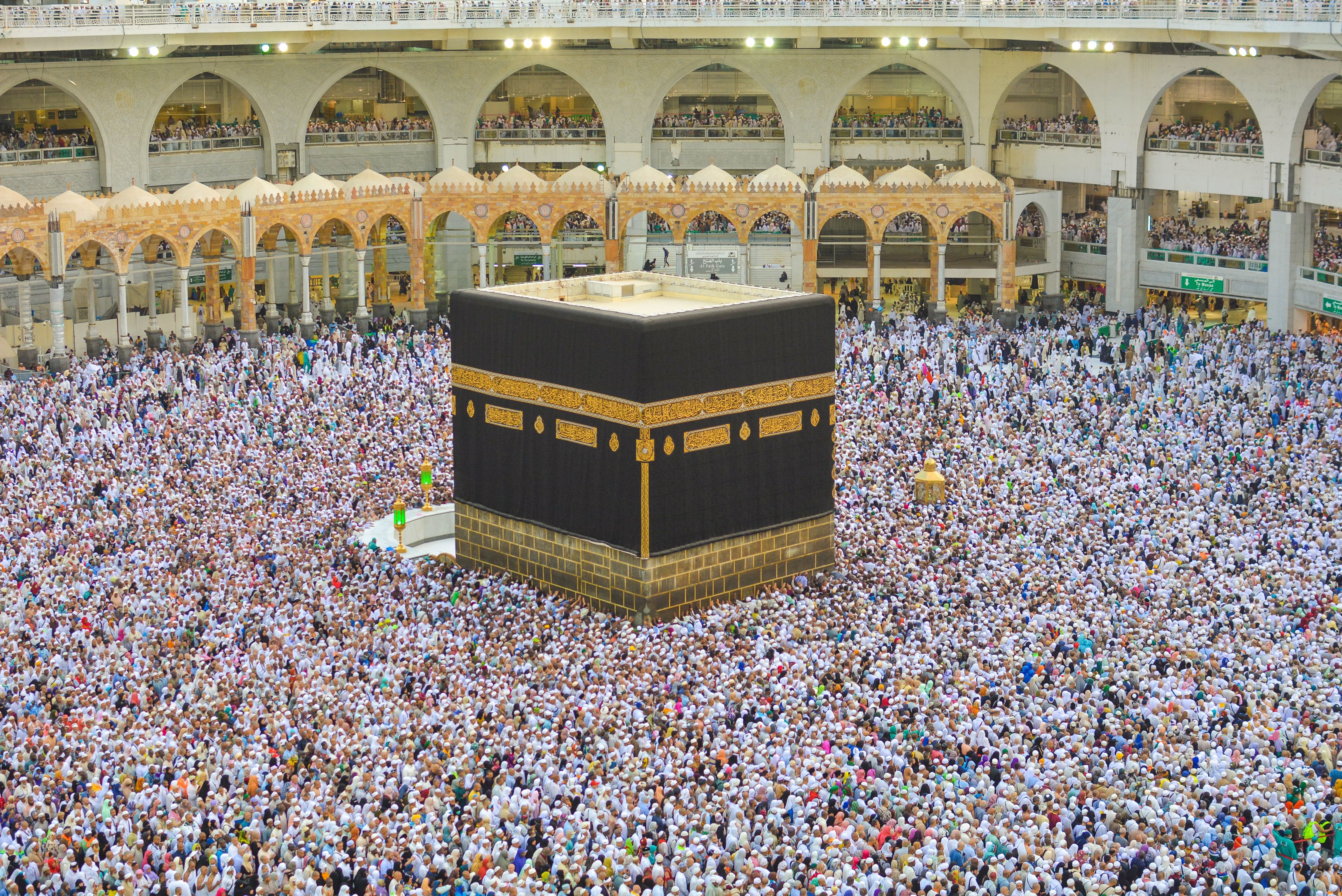

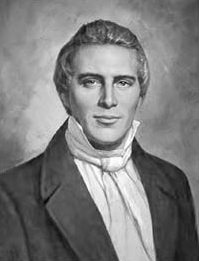 from the practice, polygamy first arose in the Mormon context in 1831 when Joseph Smith Jr., [Image at right] founder of the Mormon Church, also known as the Church of Jesus Christ of Latter-day Saints, claimed to have a revelation that it was his duty to restore plural marriage to the earth. Smith, who married at least thirty-three women and had children with thirteen of them, claimed that he had been given the authority to practice “celestial marriage” from the same source that commanded Abraham to take his handmaid, Hagar, to bed in order to produce a righteous seed and glorious progeny. Smith, like others of his era in western New York, was caught up in the “American dream of perpetual social progress, believing in a unique theology made up of an eternal monopoly of resources (including women) by males and whole congeries of gods” (Young 1954:29). Smith described a vision he had of God and Christ together in a grove of trees in which Christ told him that he would be instrumental in restoring the true gospel.
from the practice, polygamy first arose in the Mormon context in 1831 when Joseph Smith Jr., [Image at right] founder of the Mormon Church, also known as the Church of Jesus Christ of Latter-day Saints, claimed to have a revelation that it was his duty to restore plural marriage to the earth. Smith, who married at least thirty-three women and had children with thirteen of them, claimed that he had been given the authority to practice “celestial marriage” from the same source that commanded Abraham to take his handmaid, Hagar, to bed in order to produce a righteous seed and glorious progeny. Smith, like others of his era in western New York, was caught up in the “American dream of perpetual social progress, believing in a unique theology made up of an eternal monopoly of resources (including women) by males and whole congeries of gods” (Young 1954:29). Smith described a vision he had of God and Christ together in a grove of trees in which Christ told him that he would be instrumental in restoring the true gospel.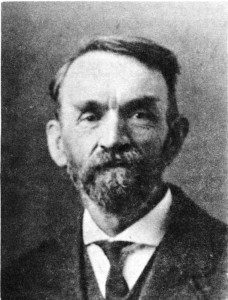 patriarchal order, or priesthood keys. He subsequently passed them to Lorin, [Image at right] who was later excommunicated by the LDS Church for “pernicious falsehood.”
patriarchal order, or priesthood keys. He subsequently passed them to Lorin, [Image at right] who was later excommunicated by the LDS Church for “pernicious falsehood.”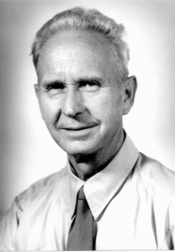
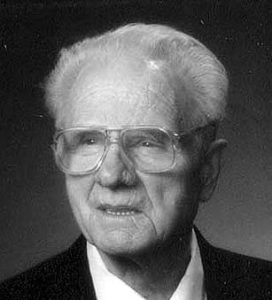 Owen Allred’s desire to work with local law enforcement officials and end the practice of arranged marriages with underage girls. Allred [Image at right] believed that transparency was an important factor in his efforts to show the non-Mormon community that the AUB and its members were not a threat.
Owen Allred’s desire to work with local law enforcement officials and end the practice of arranged marriages with underage girls. Allred [Image at right] believed that transparency was an important factor in his efforts to show the non-Mormon community that the AUB and its members were not a threat.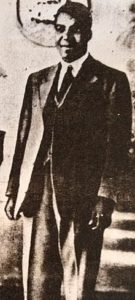
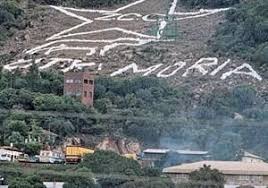 healing and prophecy, Edward took up the role of a more administrative bishop (Anderson 1999:292). It was Edward who transformed Moria into a true Zion City. [Image at right] He established the popular brass band that greets pilgrims to Moria in 1951, and built the church at Moria, which was completed in 1962 (Müller 2011:14). He was also a pragmatic leader who kept close ties to the Apartheid government, inviting government representatives to the Easter celebration in Moria in 1965. From 1963 to 1966 Edward received theological training at a Dutch Reformed college for evangelists close to Moria, a decision of which not everyone approved.
healing and prophecy, Edward took up the role of a more administrative bishop (Anderson 1999:292). It was Edward who transformed Moria into a true Zion City. [Image at right] He established the popular brass band that greets pilgrims to Moria in 1951, and built the church at Moria, which was completed in 1962 (Müller 2011:14). He was also a pragmatic leader who kept close ties to the Apartheid government, inviting government representatives to the Easter celebration in Moria in 1965. From 1963 to 1966 Edward received theological training at a Dutch Reformed college for evangelists close to Moria, a decision of which not everyone approved.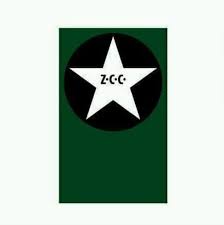 But male members often wear the cap belonging to the uniform in daily life as well. Also, ZCC members always wear a badge with a silver five-pointed star with ZCC engraved on it. [Image at right] ZCC members always wear a badge with a silver five-pointed star with ZCC engraved on it. This practice was introduced by Engenas Lekganyane in 1928. The badge is pinned on a circular black piece of cloth, which is pinned on a rectangular dark-green piece of cloth. The badge is worn on a member’s clothing, on the left side of the chest. The badge is worn every day. This makes it easy for members to recognize each other, and gives a sense of belonging and family (Wouters 2014:125). The badge is also believed to protect the wearer from all kinds of misfortune (Hanekom 1975:3).
But male members often wear the cap belonging to the uniform in daily life as well. Also, ZCC members always wear a badge with a silver five-pointed star with ZCC engraved on it. [Image at right] ZCC members always wear a badge with a silver five-pointed star with ZCC engraved on it. This practice was introduced by Engenas Lekganyane in 1928. The badge is pinned on a circular black piece of cloth, which is pinned on a rectangular dark-green piece of cloth. The badge is worn on a member’s clothing, on the left side of the chest. The badge is worn every day. This makes it easy for members to recognize each other, and gives a sense of belonging and family (Wouters 2014:125). The badge is also believed to protect the wearer from all kinds of misfortune (Hanekom 1975:3).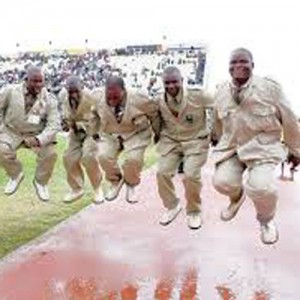
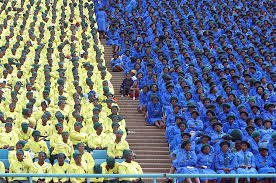 seated on the left side and men on the right side. Women and men are grouped together according to the uniform they wear. [Image at right] Preaching is often centered on testimonies of healing and other personal narratives, told in response to the reading of some Bible verses. During church services, prophets, led by the Holy Spirit, go around and single out members of the congregation. Sometimes messages from the divine are conveyed within the service; at other times the congregation member is taken to a secluded space for a personal consult. Hearing the sermon seems to be secondary to receiving healing.
seated on the left side and men on the right side. Women and men are grouped together according to the uniform they wear. [Image at right] Preaching is often centered on testimonies of healing and other personal narratives, told in response to the reading of some Bible verses. During church services, prophets, led by the Holy Spirit, go around and single out members of the congregation. Sometimes messages from the divine are conveyed within the service; at other times the congregation member is taken to a secluded space for a personal consult. Hearing the sermon seems to be secondary to receiving healing.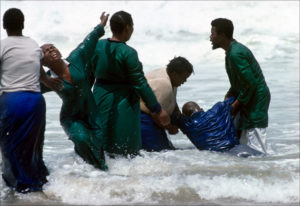
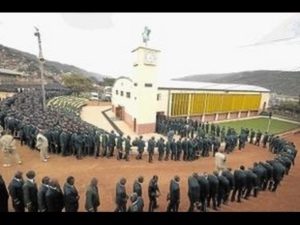 Members are expected to visit the headquarters of the church in Zion City Moria [Image at right] at least once a year, either at the Easter conference or at the conference in September. Every year up to a million of ZCC members flock to Moria to receive the blessing of the bishop in their lives (Kruger and Saayman 2014:29). Especially the assemblies every Easter attract thousands of believers. Zion City Moria has become a center of ritual power, a place of blessing, of deliverance and of healing, where one can be close to the powers of the divine (Anderson 1999:297). While the Easter Conference is the most important, the Conference in September is also well-attended. This conference is regarded as a New Year festival and a festival of thanks for the harvest (Moripe 1996:65). This festival resonates with the first fruit festivals that are known from many ATRs. One of the most important duties of the bishop, and certainly his most visible duty, is to preside over the annual conferences held in Moria. The high point of the pilgrimage is the welcoming of pilgrims by the bishop, leading a procession of his own brass band (Müller 2011:116). Communion is only administered by the bishop at the two annual conferences in Moria.
Members are expected to visit the headquarters of the church in Zion City Moria [Image at right] at least once a year, either at the Easter conference or at the conference in September. Every year up to a million of ZCC members flock to Moria to receive the blessing of the bishop in their lives (Kruger and Saayman 2014:29). Especially the assemblies every Easter attract thousands of believers. Zion City Moria has become a center of ritual power, a place of blessing, of deliverance and of healing, where one can be close to the powers of the divine (Anderson 1999:297). While the Easter Conference is the most important, the Conference in September is also well-attended. This conference is regarded as a New Year festival and a festival of thanks for the harvest (Moripe 1996:65). This festival resonates with the first fruit festivals that are known from many ATRs. One of the most important duties of the bishop, and certainly his most visible duty, is to preside over the annual conferences held in Moria. The high point of the pilgrimage is the welcoming of pilgrims by the bishop, leading a procession of his own brass band (Müller 2011:116). Communion is only administered by the bishop at the two annual conferences in Moria.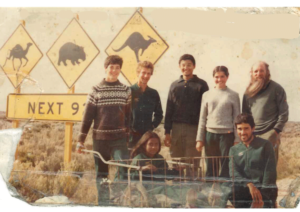 dressed in hessian robes and chains whilst holding scrolls inscribed with “fire and brimstone” Bible verses (“JC History 1981-1996,” 2016). The group’s street performances expanded into greater feats when, in 1985, several of the youngest members of the community successfully walked 1000km across the Nullarbor Desert without supplies or money. [Image at right] The small group of young Christians was led by fifteen-year-old Christine McKay. They completed the walk in two months by relying on what they found and what was given to them by strangers. This stunt earned them the name the “Nullarbor Walkers” by the media ((“Walkers Begged, Say Locals“ 1985; “JC History 1981-1996” 2016; “Critics Were Wrong, Say Nullarbor 7” 1985a, “Walkers Call for Apologies After 1,700km Trek” 1985b).
dressed in hessian robes and chains whilst holding scrolls inscribed with “fire and brimstone” Bible verses (“JC History 1981-1996,” 2016). The group’s street performances expanded into greater feats when, in 1985, several of the youngest members of the community successfully walked 1000km across the Nullarbor Desert without supplies or money. [Image at right] The small group of young Christians was led by fifteen-year-old Christine McKay. They completed the walk in two months by relying on what they found and what was given to them by strangers. This stunt earned them the name the “Nullarbor Walkers” by the media ((“Walkers Begged, Say Locals“ 1985; “JC History 1981-1996” 2016; “Critics Were Wrong, Say Nullarbor 7” 1985a, “Walkers Call for Apologies After 1,700km Trek” 1985b).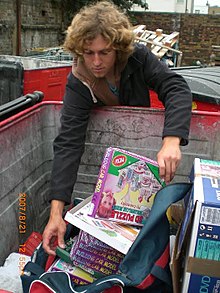 unity their money becomes added to the collective bank account of the community. Many members live in camper caravans or cheap accommodation, they “bin-raid” or “dumpster-dive” for food and other items and devise creative alternatives to using money. [Image at right] They are highly aware of sales, discounts, and free alternatives, they do their own repairs and maintenance on their vehicles or homes, make or build what they can, and practice learning to do without things that are unnecessary. This lifestyle also encourages a focus on community living. According to the JCs, living out the teachings of Jesus must be done with other Christians by living together 24/7. It is by doing this that they are better able to survive without money (A Voice in the Desert 2017d:1, 2018b:2).
unity their money becomes added to the collective bank account of the community. Many members live in camper caravans or cheap accommodation, they “bin-raid” or “dumpster-dive” for food and other items and devise creative alternatives to using money. [Image at right] They are highly aware of sales, discounts, and free alternatives, they do their own repairs and maintenance on their vehicles or homes, make or build what they can, and practice learning to do without things that are unnecessary. This lifestyle also encourages a focus on community living. According to the JCs, living out the teachings of Jesus must be done with other Christians by living together 24/7. It is by doing this that they are better able to survive without money (A Voice in the Desert 2017d:1, 2018b:2).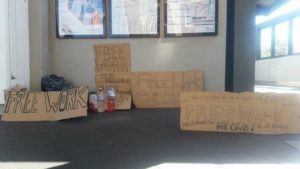 “Work” refers to putting one’s energy to working for God and with the motivation of love. The JCs occasionally carry out this practice by going on “free work campaigns,” [Image at right] where they offer their time and energy to whoever asks for help (“Living By Faith: How to Do It” 2016). 6) “Ask” being able to ask for food and shelter from those who have plenty, without feeling guilt or worthlessness. 7) “Share” involves working, living, and sharing together as a community. This ethos of community is important to maintain the maxims described above, to allow for the sharing of skills and knowledge, and to correct one another in times of error (“Living By Faith: How to Do It” 2016).
“Work” refers to putting one’s energy to working for God and with the motivation of love. The JCs occasionally carry out this practice by going on “free work campaigns,” [Image at right] where they offer their time and energy to whoever asks for help (“Living By Faith: How to Do It” 2016). 6) “Ask” being able to ask for food and shelter from those who have plenty, without feeling guilt or worthlessness. 7) “Share” involves working, living, and sharing together as a community. This ethos of community is important to maintain the maxims described above, to allow for the sharing of skills and knowledge, and to correct one another in times of error (“Living By Faith: How to Do It” 2016).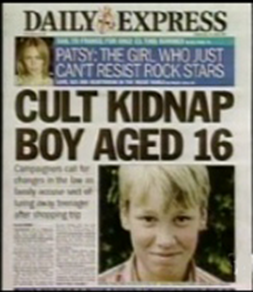 travelling with the community after gaining permission from his grandmother. [Image at right] A media frenzy ensued, and the JCs were ordered to return Kelly home. Kelly was found safe and well at a campsite in New Hampshire; however, Susan and Roland Gianstefani were arrested for not revealing Bobby’s location. They were charged with a suspended six month sentence (“Cult Kidnap Boy” 2016). In 2005, the Gianstefanis were involved once again in a controversy in Kenya when Betty Njoroge and her seven-year-old son joined the community. Despite the charges being dropped, Roland Gianstefani was arrested and kept in custody until the JCs paid bail and a bribe to have him released (“Australian cult member freed in Kenya” 2005; “Controversies” 2016). In 2006, The JCs were again involved in a media scandal regarding eighteen-year-old Joseph Johnson, which involved the alleged violent assault of a JC member by several of Johnson’s family members (Johnson 2010).
travelling with the community after gaining permission from his grandmother. [Image at right] A media frenzy ensued, and the JCs were ordered to return Kelly home. Kelly was found safe and well at a campsite in New Hampshire; however, Susan and Roland Gianstefani were arrested for not revealing Bobby’s location. They were charged with a suspended six month sentence (“Cult Kidnap Boy” 2016). In 2005, the Gianstefanis were involved once again in a controversy in Kenya when Betty Njoroge and her seven-year-old son joined the community. Despite the charges being dropped, Roland Gianstefani was arrested and kept in custody until the JCs paid bail and a bribe to have him released (“Australian cult member freed in Kenya” 2005; “Controversies” 2016). In 2006, The JCs were again involved in a media scandal regarding eighteen-year-old Joseph Johnson, which involved the alleged violent assault of a JC member by several of Johnson’s family members (Johnson 2010).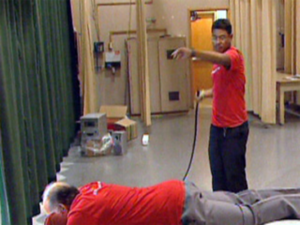 meted out to Johnson’s family. [Image at right] The mock-trial found Johnson’s father and brother guilty of attempted murder, and the rest of his family with conspiring to murder Zeuner. Jared and John, Johnson’s father and brother, were prescribed twenty-five lashes of the whip each. Dave McKay and another JC member, Jeremy, took the punishment. Cherry took five lashes in place of Johnson’s mother, and Johnson took five lashes for his brother (Johnson 2016). During the trial Johnson’s family arrived at the auditorium and the police were called to escort the JCs out of the auditorium and into their vehicles (Johnson 2016).
meted out to Johnson’s family. [Image at right] The mock-trial found Johnson’s father and brother guilty of attempted murder, and the rest of his family with conspiring to murder Zeuner. Jared and John, Johnson’s father and brother, were prescribed twenty-five lashes of the whip each. Dave McKay and another JC member, Jeremy, took the punishment. Cherry took five lashes in place of Johnson’s mother, and Johnson took five lashes for his brother (Johnson 2016). During the trial Johnson’s family arrived at the auditorium and the police were called to escort the JCs out of the auditorium and into their vehicles (Johnson 2016).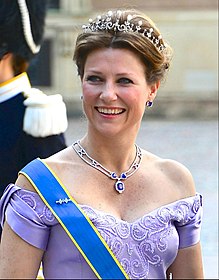
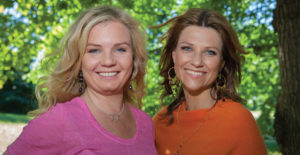
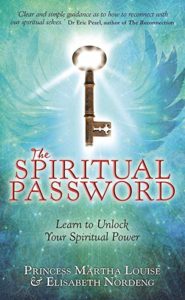 About the concept of “spiritual password” [Image at right] Princess Märtha Louise and Nordeng write:
About the concept of “spiritual password” [Image at right] Princess Märtha Louise and Nordeng write: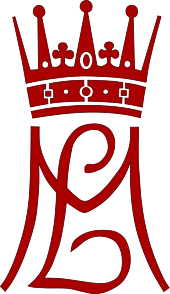 posed a specific challenge to the monarchy since the Norwegian sovereign is no longer the formal head of the Norwegian Church, yet he or she is bound by law to be of Protestant confession (Aftenposten.no. 2007; Vg.no. 2007). Märtha Louise was even encouraged in the press to renounce the title of princess (Bt.no. 2007) [Image at right].
posed a specific challenge to the monarchy since the Norwegian sovereign is no longer the formal head of the Norwegian Church, yet he or she is bound by law to be of Protestant confession (Aftenposten.no. 2007; Vg.no. 2007). Märtha Louise was even encouraged in the press to renounce the title of princess (Bt.no. 2007) [Image at right].